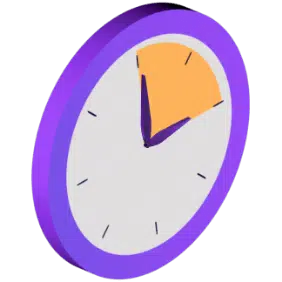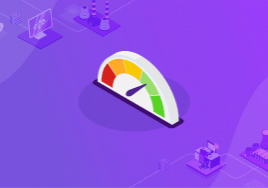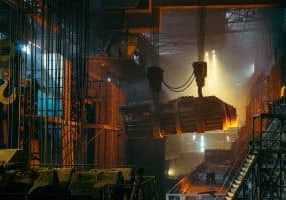Published 16/06/2023
New technologies are essential for decarbonization strategies, but at the end of the day it is the way in which they are used and the people behind them that are the key to success. Digital tools are here to make us better and to help us reach our goals, but they are not here to replace us. To improve the results of sustainability strategies, it is most imperative for teams and collaborators (employees, stakeholders…) to be engaged.
Benefits of improved engagement include better wellbeing, satisfaction, and productivity. On an organizational level, this can improve your brand reputation and attract even more top talents. Increased engagement has also been proven to increase adaptability, which will help your organization flourish in the context of the energy transition, where as a society, we are still finding our feet. We are seeing constant changes and evolutions (such as in terms of CSR strategies, ESG reporting, international protocols, etc.), and that has come with the need to act quickly, such as when new regulations are introduced with short deadlines.
In this article, we have listed a few pointers to help you leverage your digital tools to engage the collaborators of your decarbonization strategy.
TABLE OF
CONTENTS
01
02
03
04
05
01
Set Concrete and Accessible Targets
Your teams may be motivated by the fact that your business goals resonate with their personal values, however, it is important to maintain this motivation by setting clear and accessible KPIs. By using digital tools, such as an EMOS, you can centralize your data, and present global KPIs clearly using dashboards, which can be accessed by the relevant collaborators.
Rob Goffee, a professor who specializes in Innovation and Creativity in Business, pointed out that to have a “shared long term vision” is one of the most significant attributes of businesses which repeatedly deliver creativity and innovation better than others. He also noted that other characteristics include “extensive commitment to common goals” and a leadership existing “throughout the organization, not just at the top…effective teamwork and participation …there is cross-function co-ordination. Innovative organisations are characterized by people who have fun."
Setting goals will give collaborators a clearer sense of direction. A concrete roadmap needs to be put in place. It can always evolve and improve if necessary, such as if KPIs need to be updated, but the key is to have one in place. Collaborators will feel lost if they have over generalized goals that cannot be measured. Having centralized and clear data can also improve communication and workflows, facilitating the management and collaboration of teams.
"There is agreement on what stops businesses being innovative: excessive control, excessive division and segmentation, uncertainty, lack of information-sharing, short-termism, difficulty of management."
Prof. Rob Goffee Professor of Organizational Behavior, London Business School, in his essay, “Innovation and creativity in business,” 2000.

02
Use Data to Recognize Individual Achievements
Digital tools can help you access more personalized data to see contributions from all teams. In this way, the decarbonization strategy is not on the shoulders of a few individuals, and far from reach of most collaborators. By using digital tools to collect specific data specific to each department, you can give them more autonomy and ownership of specific missions in relation to the reduction of your energy consumption. By giving more responsibility to smaller branches of your organization, they will have more motivation to contribute to your wider goals. In this way, all parts of your organization can be involved and engaged with the bigger challenges.
Having more visibility on global KPIs and data on their achievements can improve engagement as collaborators will not only have more visibility on the objectives, but also on their progress. Employees can become even more engaged by having this progress recognized with positive reinforcement and rewards to recognize achievements. You can have smaller missions for a bigger goal. This will mean teams are more engaged, and have a greater chance of success for your organization.
How Can you Take Control of your Energy Costs from the Moment of Purchase?
03
Automate Processes to Save Time Which Can Be Devoted to Collaboration and Improvement
A lot of time is spent on tasks that can easily be automated. This means that there is a lot of potential to invest this time in activities that can contribute to improved engagement, such as team building and training programs to improve collaborators' skills.
One major example where time can be saved thanks to automation is energy management. There are technologies and tools in place that can help digitalizing processes. For instance, instead of manually uploading information such as energy consumption, this can be automated and uploaded in real-time. Energy invoices can be automatically uploaded. Drifts can be spotted automatically, and teams can be alerted to act immediately.
Saved time can also be used to listen to your collaborators and to encourage them to be more creative. The UN has recognized the importance of creativity and innovation to solve problems affecting economic, social and sustainable development. We are still on the road to sustainability. It is a space for innovation and new solutions are possible. Inspire your collaborators to think laterally and listen to their suggestions.

How Much Time Can Be Saved?
From the experience of our operations teams and energy experts, basic energy management using tools like Excel can lose teams around 1.5 to 3 days per week (at least).
This is because there are various tasks involved which usually take hours each, such as:
Recuperating data from multiple sources and people (energy meters, water meters, production data, invoices…).
Formatting the data, which involves cleaning data making it readable. This is a repetitive task without any added value, which also carries the risk of manual errors.
Building reports and verification, including KPI setting and graph graph building.
Sharing the information.
These tasks are laborious, costly, and can easily be automated. Without automatic tools like an EMOS, there is also no fine granularity of incoming data. This makes it hard to take action quickly, such as when there are drifts in energy consumption.
04
Encourage your Collaborators to Continue Learning
Time invested in learning programs for collaborators will help increase their engagement, which, in turn, will help improve your results. But of course, your collaborators need to be engaged in these programs too! So, it’s imperative to choose the right programs to guarantee motivation and enthusiasm. Online learning databases are a great way to start. In this way, collaborators can have access to a variety of learning resources that cover an array of topics to tailor their needs more effectively.
One study showed that nurturing a learning environment in the workplace, which encourages employees to “create, acquire, and transfer knowledge…aids employees in meeting the organization’s strategic goals and helps the organization in modifying its behavior to tackle new challenges.” It helps retain top talents by “providing them with opportunities to expand their skills and share them with others.” Overall, the approach “benefits both the employees and their organizations.” It results in “greater opportunities for challenge, responsibility, and control, nurturing the employees’ sense of fulfillment hence, seeing their organization as one that offers them the opportunities for both accomplishment of their work goals and self-development strengthens their willingness to engage themselves fully at work.”
"Learning programs engage our team by providing opportunities for skill development, career advancement, collaboration, and knowledge sharing. We are really committed to employee growth and development and we believe that continuous learning contributes to more team engagement. This is key to the success of any group strategy."
Diana Makhkamova, Digital Learning Manager, METRON.
Access to trainings can be improved by mobilizing an inhouse team to work on learning and development. If not, trainings can also be outsourced, and this can even bring greater benefits as external teams can bring new perspectives to your teams. To ensure that the external training organization you are working with can deliver the best results, it’s good to see whether they have guarantees such as the QUALIOPI certification, which confirms that the organization is reliable and can provide high quality training programs.
05
Help Your Collaborators Understand the Wider Context
It is important to communicate the wider context of your strategy so that your business goals can be in alignment with the values of your collaborators. If your employees do not understand the reason for the goals they are trying to achieve, how can they really believe in them and be more engaged? Your teams need to understand why decarbonization is important and why it is good for your business. Employees want to know that they are working towards positive change. The reduction of GHG emissions has become a subject important to everyone. There has been a social shift and teams are ready to invest in the topic.
"On the path of decarbonization and transitioning our economy and way of life, there is a huge demand for clear and useful information. It’s not only data - everyone has data - but how to visualize it. Today, a clear diagram of C02 emissions related with technical improvements and societal changes is a very powerful content.
Digital allows that. Gathered data, played with it, and displayed it in an interesting way. People like that, it makes them feel a little bit smarter on how the world is working. "
Benjamin Rault, Energy and ESG Manager, METRON.
Today, purpose is more important than ever for employees in their jobs. For example, one survey by TheTalentPeople showed that more than 75% of young employees want to work “for an employer that is doing something positive for the future of our planet.” Almost half of respondents said, “they would like employers to tell them more about their green commitments during the job application job process itself.” If your collaborators believe in your decarbonization strategy, there is no doubt they will be more engaged from the get-go. But be sure to communicate your decarbonization goals and values not only to new recruits, but also to your existing collaborators.
Do you want to learn more about how digital solutions can help you engage your teams to succeed?











